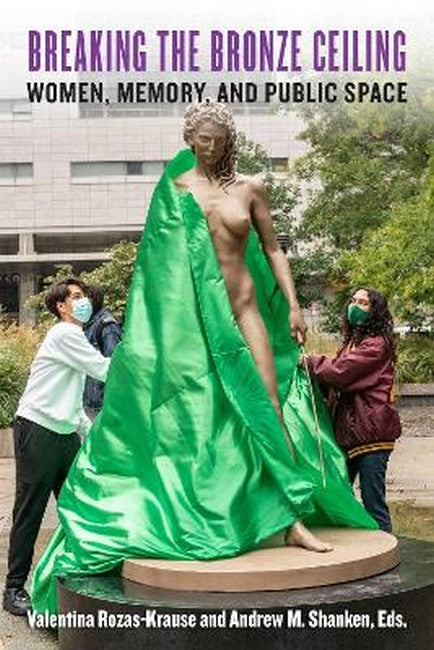Valentina Rozas-Krause (Edited By) Valentina Rozas-Krause is Assistant Professor in Design and Architecture at Universidad Adolfo Ibanez in Chile and Harvard University Radcliffe Institute for Advanced Study Fellow (2023-24). She is the author of Ni Tan Elefante, Ni Tan Blanco (Ril, 2014) and the coedited volume Disputar la Ciudad (Bifurcaciones, 2018). These books join peer-reviewed articles in History & Memory, e-flux, Latin American Perspectives, Memory Studies, Anos 90, ARQ, Revista 180, Cuadernos de Antropologia Social, and Bifurcaciones alongside chapters in Golpes a la Memoria (Tege, 2019) and Neocolonialism and Built Heritage (Routledge, 2020). Andrew M. Shanken (Edited By) Andrew Shanken is Professor of Architectural History and the Director of American Studies at the University of California, Berkeley. He is the author of 194X: Architecture, Planning, and Consumer Culture on the American Homefront (University of Minnesota Press, 2009) and The Everyday Life of Memorials (Zone Books, 2022).
Request Academic Copy
Please copy the ISBN for submitting review copy form
Description
List of Figures ix Introduction Valentina Rozas-Krause and Andrew M. Shanken 1 Part I: Patronized Women 1. Innocence and Guilt: Memorializing a Gender Tragedy in Nineteenth-Century Santiago de Chile Pia Montealegre 19 2. George Eliot at Nuneaton and Trans Monumentality Amanda Su 41 Toppling Pocahontas Kirk Savage 69 Monument to the Chilean Women Victims of Political Repression Carolina Aguilera and Manuela Badilla Rajevic 73 Part II: Public Women 3. White Marble and White Women: Adelaide Johnson's Portrait Monument Lauren Kroiz 79 4. "We Shall Beg No More": Helen Keller, Politics, and Commemorations in the National Statuary Hall Sierra Rooney 101 Monument to Sojourner Truth Katherine Hite 118 Fearless Girl, New York City Marita Sturken 122 Monument to the Empress Maria-Theresia, Vienna, Austria Mechtild Widrich 126 Part III: Women Warriors 5. The Myth of the Passive Woman in Confederate Monuments Nathaniel Robert Walker 133 6. Firearms, Flowers, and Barricades: Women's Reinscriptions in the Mexican Landscape of Monuments Tania Gutierrez-Monroy 158 Memorial to the South Carolina Women of the Confederacy (Frederick Wellington Ruckstuhl, 1909-1912), Columbia, South Carolina Dell Upton 180 Memorial to the Black Mothers of the Periphery Fighting against State Terrorism, Rio de Janeiro Daniela Sandler 189 Mujeres Creando, Plaza Chola Globalizada, La Paz, Bolivia Ana Maria Leon 193 Part IV: Allegorical Women 7. The Colonial Marianne: Representing Liberte and France in Occupied North Africa Daniel E. Coslett 201 8. Female Winged Victory Statues in French Algeria Susan Slyomovics 230 The Argentine Marianne Fernando Luis Martinez Nespral 253 I Am Queen Mary, Copenhagen Erika Doss 257 Patience on a Monument: A History Painting Daniel Herwitz 261 List of Contributors 265 Index 271
. . .[A] clear, significant contribution to the fields of gender studies, women's history, and ever expanding conversations on monuments, collective memory, and the built environment.-- "H-Net Reviews" Reassesses the role of women in public art, with a particular focus on the lack of female memorials around the world.-- "Publishers Weekly" This powerful book asks why women have been so underrepresented in public memorials and how distortion and debasement have played a part in how women have been remembered. Breaking the Bronze Ceiling makes a strong case for how cultural memory--and its mismanagement--have been controlling factors in the treatment of women in public art. The range of approaches makes the chapters lively and thought-provoking.---Susan G. Solomon

